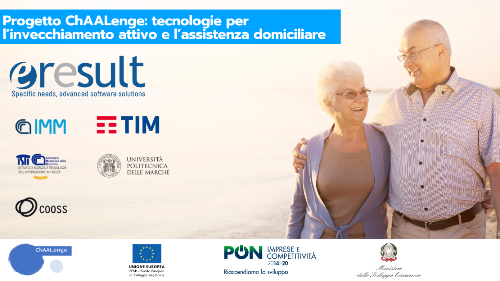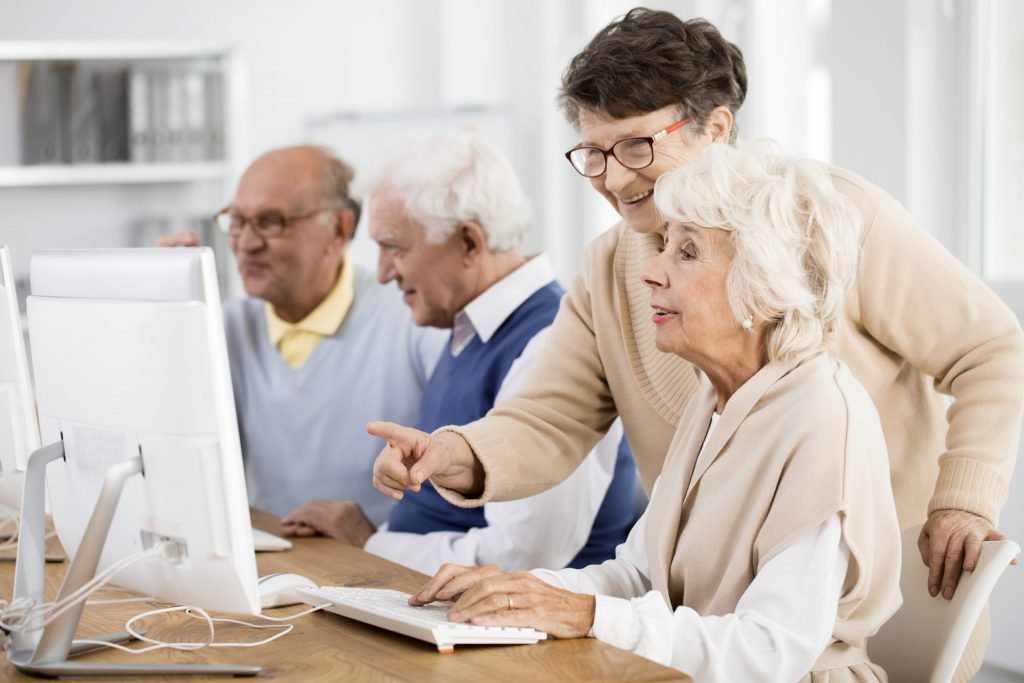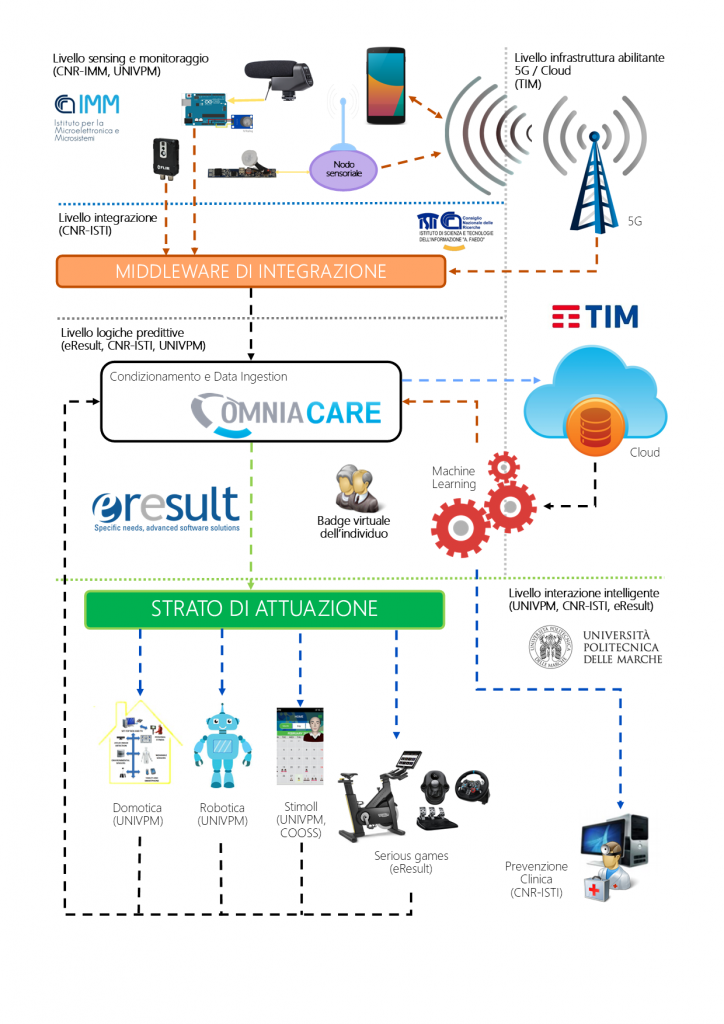
Active aging in Italy
In Italy, during the last decade, there has been a drastic reduction in the birth rate and a considerable lengthening of the average life span of people, thanks to the giant steps taken by medicine, but also to improvements in the food, environmental and social fields. These factors have favored the progressive aging of the population, with substantial consequences on public spending both in terms of social protection and in terms of welfare systems. In a context like this it is necessary to fully understand the concept of “Active Aging” or active aging, which contemplates good health during old age through the promotion of a healthy and active lifestyle, which is considered in all respects an effective prevention tool against numerous pathologies; A balanced diet, limited consumption of tobacco and alcoholic beverages, regular physical activity and the pursuit of personal interests, both within one’s private and social life, are among the main factors affecting this process.

To ensure that this lifestyle can be effectively adopted by people, social and political institutions have a duty to develop services and policies that allow the individual to choose the path of active aging that is more in line with their motivations, preferences and needs. The concept of active aging also involves overcoming a cliché that sees the elderly person as a citizen in need of constant assistance and passive. In fact, it has been found that if put in conditions ready to protect their well-being, older people can provide the community with numerous useful contributions such as volunteering and workforce. In January 2021, in order to enhance and give considerable importance to people who are entering the third age, the ChAALenge project was developed and launched. But what is it about? Let’s find out now!
What the ChAALenge project aims at
The ChAALenge project, in which eResult is the coordinator, sees the participation of most of the project components of the Cluster called “Technologies for Living Environments” (Smart Living Technologies), which benefited from a co-financing by MIUR (Ministry of Education). This project, which began on January 1, 2021 with a deadline of December 2023, aims to create an ecosystem aimed at facilitating the active aging of the individual, who will acquire the ability to integrate and communicate with each other the different technologies used. available by researchers. The aforementioned project initiative therefore has the objective of making concrete, through the Internet of Things (IoT), the Ambient Assisted Living, that is the assistance in favor of elderly people both inside and outside the home. At the same time, the system will have to favor the study of a common pathology in the elderly, in order to collect data that allow the prevention of any worsening of health conditions in a proactive and anticipatory manner. Different technologies made available by the various partners will be used in the project.

Following the prolongation of life expectancy, it must in fact be emphasized that people aged between 75 and 85 are undoubtedly healthier than previous generations and must therefore be integrated with society. Despite this much more than positive factor, the last ten years of life go hand in hand with frequent cases of disabilities, even serious ones, which fall on the budget of the respective families, society and of course the National Health System. Therefore, the need arises to be able to identify promptly and early all the subjects who are about to enter the condition just described, also known by the term of fragility. If it is not intercepted and treated in an appropriate way, it will manifest itself with a succession of episodes with a negative connotation such as cognitive deterioration, loss of independence even during the carrying out of the simplest actions, an increase in the risk of admissions to residential or hospital facilities, and finally death.
The undisputed protagonist of the project is therefore maintaining the autonomy of the fragile subject, which can be categorized as:
- the ability to interact, control and make personal decisions regarding every branch of daily life, always maintaining a behavior consistent with one’s preferences, beliefs and rules;
- the ability to carry out all the actions related to daily life such as cleaning, cooking, driving a car, going to the supermarket to do the shopping, consulting a web page and much more;
- the perception of one’s role within a system of values and a specific cultural context, thanks to which it is possible to weave satisfactory interpersonal relationships and attend environments capable of contributing to one’s psycho-physical well-being.
It is well established that the human being, whatever his age, in addition to basic needs such as eating, drinking, sleeping and dressing, must interact with his peers, otherwise the onset of anxiety, depression and bad mood. Many elderly people suffer from these symptoms only because they are not in optimal conditions, including the possibility of leaving the house alone, to establish pleasant friendships and social relationships.
In order to carry out this program successfully and in the best possible way, technologies for monitoring the cognitive and physical state that are not invasive at all will be used, which will allow the psycho-physical condition of the elderly individual to be controlled both at home and outside. , also thanks to the use of 5G. In this context, Omniacare, the software created by eResult for implementations in the medical field, will have the task of collecting specific data on the individual, in order to create a real virtual badge and define a broad and extensive profile. Thereafter, the monitored subject will receive the assistance he needs from a qualified professional, such as a doctor or nurse, speaking from the comfort of his home via a computer or smartphone. Through the use of elements of smart living, home automation, image processing technologies deriving from one or more artificial vision systems and environmental sensors, it will also be possible to follow rehabilitation therapies and specific aging medicine programs. The necessary data will be extrapolated in a clear and transparent way for the user from the smart systems and thanks to the notifications sent by the badge installed on a mobile device, the patient will receive real-time advice on the precautions to be taken to best preserve his good health. For example, if the person with respiratory problems is in a shopping center or in a particularly crowded place, they will receive news about the poor quality of the air. If, on the other hand, you are on board a bus, the model will inform you about the tangible risk of shaking and vibrations that could originate in a fall.
The direct and indirect benefits of the ChAALenge project
Speaking of the benefits, the project can only bring a long series of them, including: – the increase in the use of digital technologies in the field of social and health services and the consequent creation of new job and business opportunities for displaced professionals throughout the national territory. Furthermore, with the spread of smart working like wildfire, even those Italian regions most affected by unemployment would be favored.
- the increase in the efficiency and effectiveness of interventions carried out at home, in terms of the number of patients accurately and properly assisted. Furthermore, patients, not being forced to travel to and from the healthcare facility, would be less exposed to the risk of stress, injuries and monetary expenditure.
- a significant reduction in the severity and number of all those situations that require specific support interventions in the hospital setting. Thanks to the decrease in the aforementioned, health personnel could therefore devote more time and energy to those who need assistance only within the structure, such as the victims of serious illness, road / work accidents and all the red codes that arrive at the ER;
- the reduction of healthcare costs associated with outpatient and hospital access, thanks to the decrease in occupancy of beds and the consequent savings in water, electricity, food, drugs and health equipment such as gloves, syringes and masks;
- less use of protected structures. Just think of nursing homes and retirement homes, whose cost of stay, being often very high, has the power to jeopardize the financial conditions not only of the person concerned, but also of his family;
- the elderly person would have the opportunity to enjoy family affections every day, without living with the fear of breaking away from his daily routine. When you can stay and live within your own home, privacy and the use of your objects and respect for your spaces are guaranteed;
- timely prevention of risks for elderly patients and future pathologies, with favorable repercussions on health care / assistance costs.
- The decrease in paper volumes devoted to the collection of data and information from patients, in favor of greater protection of privacy on the one hand and a possible redistribution of the spaces occupied by the archives on the other.
Conclusions
To summarize, the ChAALenge project aims to support the key elements of active aging on all fronts (human and technological), in a rather critical national situation. In fact, in the European context, Italy has the highest percentage of people aged 65 or over (23.2% in 2020) and policies ready to promote active aging are almost non-existent. In fact, it is clear that the current socio-economic scenario, by nature, clashes with what is claimed in terms of active aging, as the gradual approach to retirement of workers, which aims to gradually decrease hours and workloads, simultaneously removes them. the opportunity to stay active; At the same time, the prolongation of working life, which encourages the elderly person to avoid the interruption of the employment relationship even when he could retire, since, thanks to his many years of experience in the role, he represents an excellent resource for the company, it removes the possibility of dedicating oneself to other activities that can provide well-being, such as sports, travel, trips out of town, volunteering or spending more time with loved ones. It is therefore necessary to radically intervene on this situation so that the elderly can actually find a balance and live more peacefully within society.